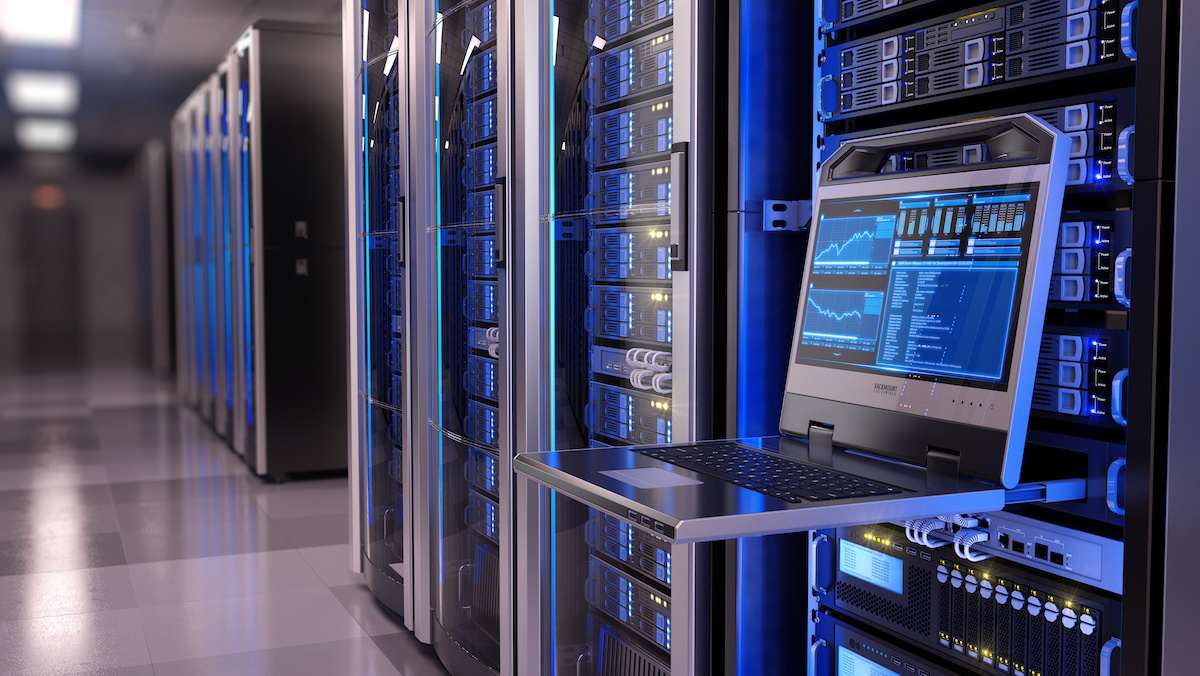What Is DMaaS and How Is It Different From DCIM?17 min read

For better or for worse, data center infrastructure management (DCIM) software has long been a standard for many mission critical facilities. On one hand, these tools have proved valuable for companies looking to maintain uptime while optimizing energy and other resource consumption. On the other hand, these tools have also fallen short on many of their originally promised benefits and have left many facilities with vast amounts of data that they don’t know what to do with. Because of the latter, recently many enterprises have started moving away from DCIM in favor of cloud-based tools, one of which being Data Management as a Service (DMaaS).
What Is DMaaS?
At first, DMaaS sounds like a software-as-a-service approach to DCIM. Many DCIM solutions come in a SaaS model, and DMaaS has its roots here, but it’s more than that. DMaaS takes this idea a step further by leveraging big data to provide a new level of analytics services.
Traditional DCIM software, whether on-premise or SaaS, can optimize operations by analyzing data from the specific facility at hand. DMaaS applies this concept on a much broader scale, aggregating information from all of a vendor’s data centers. It then anonymizes, pools and analyzes this wealth of stats to produce more accurate, meaningful and helpful insights.
DMaaS isn’t an alternative to DCIM as much as it is a new and improved method of doing it. Its cloud-based, vendor-neutral architecture, and big data capabilities improve management across multiple areas.
Ease of Implementation
One of the most significant features of DMaaS is its ease of implementation. Many businesses encounter difficulties in adopting a traditional DCIM system. On-premise solutions can be slow and complicated to install, requiring thorough audits of a facility’s needs, equipment and processes.
Since DMaaS is vendor-neutral (in the sense that it can work with virtually any type of data center equipment), its implementation is not hindered by a data center’s infrastructure. Setup is largely outsourced, so companies can focus on their regular operations during the transition. DMaaS also supports a broad range of deployment environments by design, making it easier to apply to a diverse group of sites.
Faster deployment helps teams focus on their fields of expertise, minimizing downtime and maximizing productivity during setup.
Data Center Performance
At its core, DCIM is supposed to ensure data centers work as they should. The narrow scope of traditional deployments holds them back in this regard. DMaaS has the advantage of pulling data from dozens or even hundreds of facilities, providing more meaningful insights.
Since DMaaS analyzes data centers outside of a company’s own deployments, it can provide global benchmarks. This scale offers a more realistic picture of how well an enterprise’s data centers are operating. They can then make decisions about any needed changes with more confidence.
These larger data sets also inform more accurate predictions about potential equipment failures. Information from other facilities can reveal possible outcomes for companies with similar infrastructure. The DMaaS vendor can then make recommendations or adjustments as necessary.
Security
Security is another leading concern in any cloud deployment. A 2020 survey revealed that 48% of global enterprises say safety concerns were their most significant barrier to cloud adoption. DMaaS can improve data center security in the same way it improves performance.
Global benchmarks can highlight where an organization may need to improve its security infrastructure. Similarly, if vulnerabilities arise out of some data centers’ operations, DMaaS can fix them in similar facilities. Being connected to a global network helps enterprises learn from the mistakes of other companies.
Since DMaaS improves system uptime, it reduces performance–related security risks. By preventing unexpected disruptions and crashes, it removes the openings and hacking vulnerabilities these events create. To be fair, on-premise solutions do have some security benefits over cloud-based systems for the simple fact of being onsite. However, it’s important to note that many cloud-based solutions are based on one-way protocols with encrypted data, making unauthorized access much more difficult.
Accessibility and Expense
With a traditional DCIM solution, IT workers have to be on-site to address data center management concerns. Since DMaaS is cloud-based, users can look through operational data or make changes remotely. DMaaS also standardizes data across a company’s IT deployments. This uniformity helps employees get a more comprehensive picture of their infrastructure and operations.
As with most SaaS solutions, DMaaS is often more affordable than standard DCIM. Since it’s cloud-based and vendor-neutral, prices don’t have to reflect physical infrastructure requirements. Faster installation and improved uptime also help keep costs low.
Is DMaaS the Next Step in Data Center Management?
With the cloud becoming increasingly prominent, enterprises must ensure consistent data center performance and security. These needs led to the dawn of DCIM, which cloud-based solutions like DMaaS have improved upon. DMaaS gives businesses the flexible, fast and data-centric tools they need to optimize their cloud deployments.
DCIM was a necessary step as data centers became more important. In the same way, DMaaS may be needed to improve DCIM.
With this being said, DmaaS still may have a long way to reach its potential. Because the long-term goal of DmaaS is to integrate physical data center infrastructure management with many other services, it may take some time to get there.
Real-time monitoring, data-driven optimization.
Immersive software, innovative sensors and expert thermal services to monitor,
manage, and maximize the power and cooling infrastructure for critical
data center environments.
Real-time monitoring, data-driven optimization.
Immersive software, innovative sensors and expert thermal services to monitor, manage, and maximize the power and cooling infrastructure for critical data center environments.

Devin Partida
Editor-in-Chief at ReHack
Devin Partida writes about data, cybersecurity and smart tech for ReHack.com, where she is also the Editor-in-Chief.
0 Comments